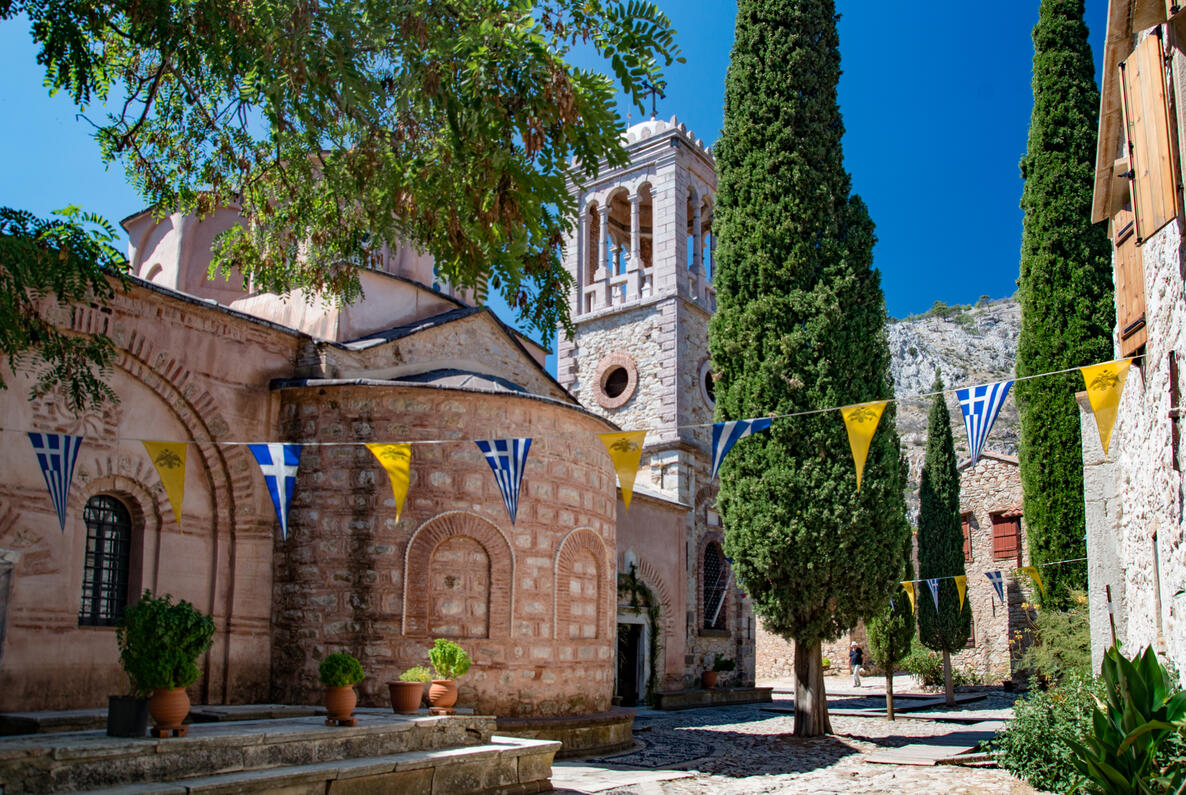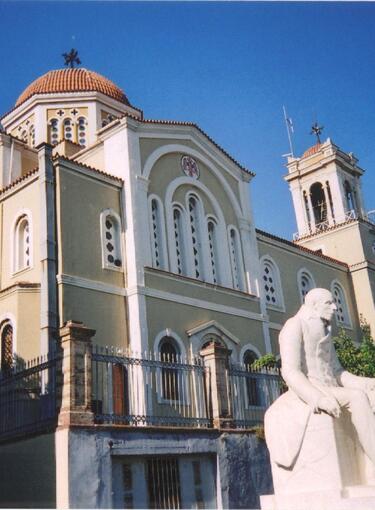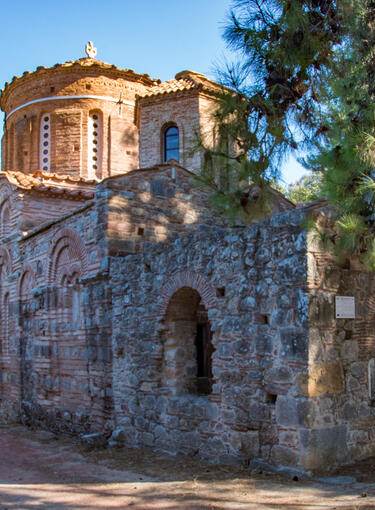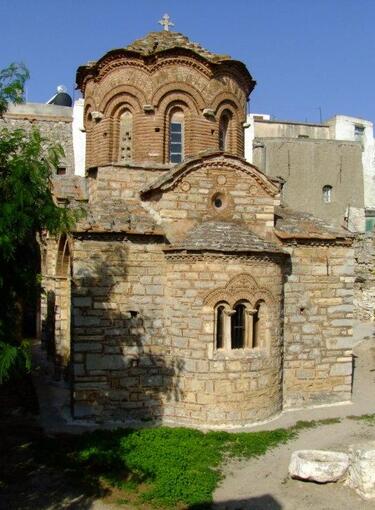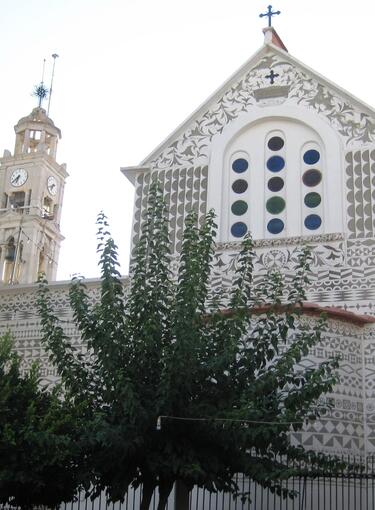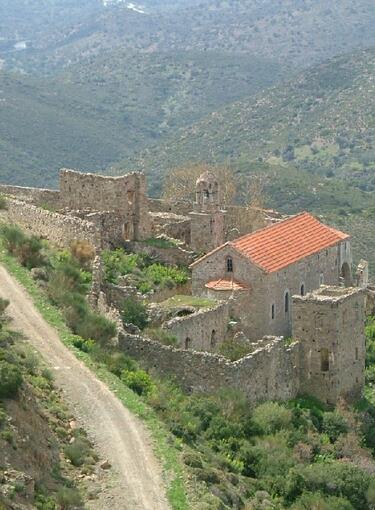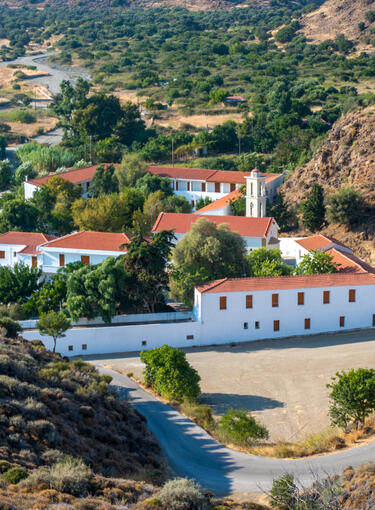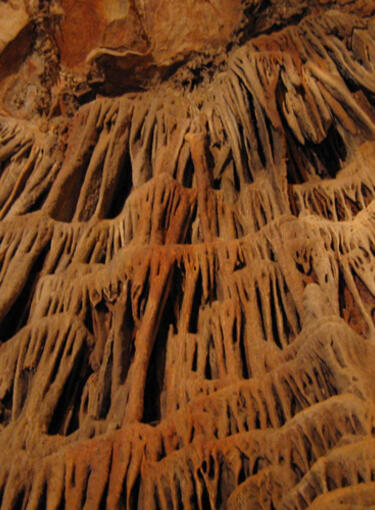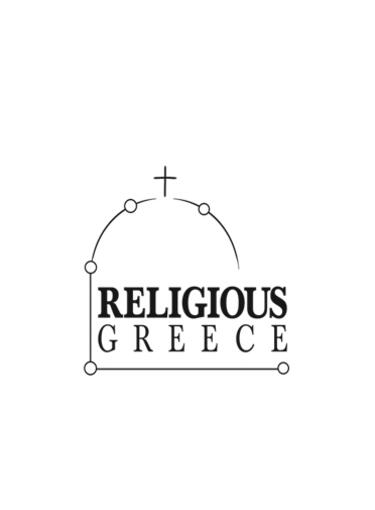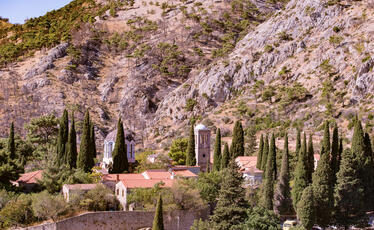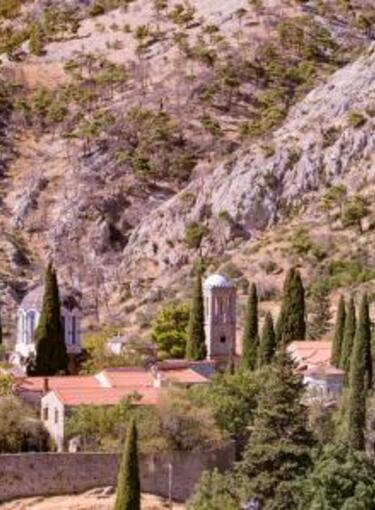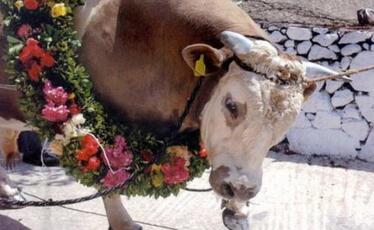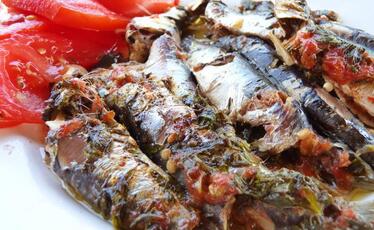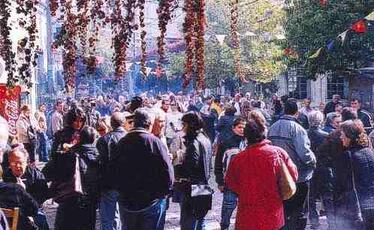At Provateio mountain in central Chios, at a distance if approximately 15 km from Chora, surrounded by the beautiful forest of pine trees, is Nea Moni the most important Byzantine monument of the island and one of the most important of the whole Greece, which has been characterized as a World Heritage Monument and is protected by UNESCO.
It was founded in the middle of the 11th century following a sponsorship of emperor Constantine IX Monomachos, as a fulfillment of his promise to three ascetics who lived on the island. According to tradition, at the location where the monastery was built, the three ascetics, Nikitas, Ioannis and Iosif, had located hanging from myrtle branches the miraculous icon if the Virgin Mary and had founded a small church. Later, they met Constantine in Lesvos, who was in exile at the time, and they prophesied that he would become emperor. When the prophesy was fulfilled, Constantine undertook the funding for the construction and the decoration of the catholicon of the monastery and the erection of the auxiliary buildings, with the assistance of the empresses Theodora, his sister, and Zoe, her wife. The monastery had a lot of privileges and many donations from the following emperors, and for centuries it was an important monastic centre, something that can be proven by the numerous reports and narrations, from which the most important one is by the priest-monk Nikephoros of Chios, in 1804. Its decline started essentially in 1822, when the Turks looted it and slaughtered its monks and all the people who had found refuge there. Later, in 1881 it suffered destructions due to the great earthquake of Chios. During the last years significant efforts have been made to renovate the area, to restore the catholicon and the auxiliary areas, to carry out maintenance works to the mosaics and conduct excavations.
At the centre of the large complex dominates the catholicon, which was inaugurated in 1049, and it stands out because of its architecture and its mosaic decoration, which reflects the art of Constantinople from the middle of the 11th century. It belongs to the architectural type of the so-called “island” octagonal church and, according to tradition it is a copy of the church of the “small” Agioi Apostoloi (Holy Apostles) in Constantinople, which no longer survives. Characteristic of this type is that the main church is a unified area, since the eight supports of the dome are attached on the walls as pilasters. On its eastern side, the altar area is tripartite, while on the western side there are two narthexes, from which the exonarthex ends to semi-circular conches on the sides. At its exterior they have followed the masonry that is characteristic of Constantinople, with carved stone-bricks which are alternate with a series of bricks. Of particular interest are the stone arches, the apses and the ceramic decoration on the upper parts of the walls (crosses, sun, meanders, check pattern grids etc). The exonarthex, which was added to the monument some years later, perhaps in the years of empress Theodora (1055-1056), is built according to the cloisonné system of masonry.
The mosaic decoration of the catholicon, which survives today in fragments, dates from the years 1049-1055, in other words it was completed after the death of Constantine, the period when empress was Theodora. There are mosaics on the upper parts of the walls of the main church and at the highest parts and the small dome of the esonarthex. The vertical walls of the monuments were initially covered with colored marble revetment, which was destroyed in 1822 and today has been replaced with repainted plasters. From the mosaic decoration many representations survive: at the tripartite bema the Virgin Mary at the conch of the altar area and the archangels at the conches of the prothesis and the diaconicon. At the main church there are scenes from the life of Christ (the Baptism, the Transfiguration, the Crucifixion, the Deposition, the Resurrection). The scenes from the life of Christ continue to the esonarthex, στον βόρειο τοίχο (the Raising of Lazarus, Entry into Jerusalem, Washing the Apostles feet) and on the southern wall (the Prayer at the Garden of Gesthemane, the Betrayal, the Ascension, the Pentecost). At the centre of the small dome of the esonarthex there is the depiction of the Virgin Mary and saints on the other surfaces. At the exonarthex survive parts of wall paintings, during the Palaelogan and post-Byzantine period. At the floor of the church survive Byzantine opus sectile.
Apart from the catholicon, of particular interest are the refectory at the south of the church and the cistern on the northwest, buildings also from the middle of the 11th century. At the refectory, which today functions as a museum area, they still have the authentic built table, whose upper surface is covered by opus sectile. To the middle of the 11th century also dates the defensive tower on the northwestern corner. At the west of the church, a restored two-storey cell houses a Museum Collection of Nea Moni. At the north, next to the entrance, is the chapel of Timios Stavros (Holy Cross), which serves as an ossuary.
It is a women’s monastery and it celebrates on the 23rd of August.
Informations
Additional
Date:
middle of the 11th century AD
Season:
Byzantine
Celebrates:
23 August
Holy Metropolis:
Chios
Under the Supervision of:
Ephorate of Antiquities of Chios
Address:
Karyes 82100
Access:
Car
Access to People with Special Needs:
Yes
Parking:
Parking space



